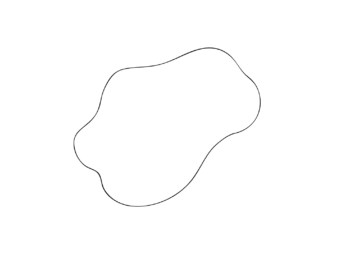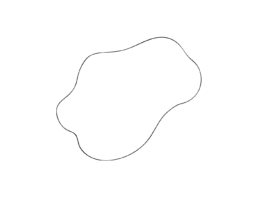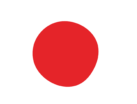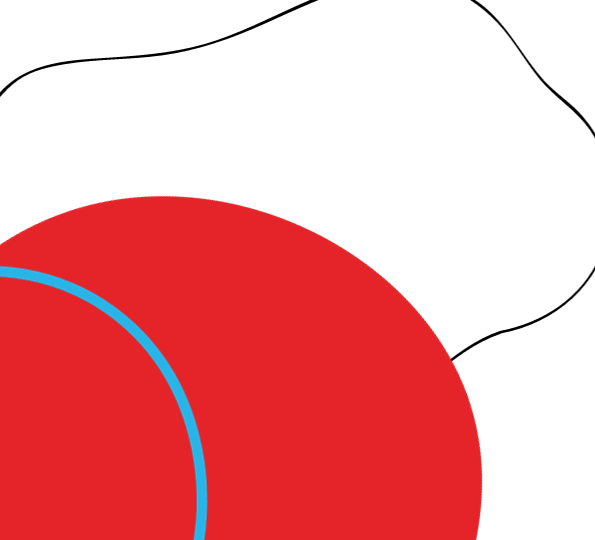Master of Pharmacovigilance
Pharmacovigilance (PV) plays a key role in the healthcare system by detecting, assessing, understanding, and preventing the adverse effects of medications.PV has traditionally been involved in mining spontaneous reports submitted to national surveillance systems. The emerging trend in PV is to link pre-marketing data with human safety information observed in the post-marketing phase. Upon completion of this master's, you will get to dive into Pharmacovigilance's different stages with labor market cases.








Modality
On-line
Duration
24 Months
Why Pharmacovigilance is an attractive career choice
Pharmacovigilance is a field of medicine that focuses on identifying, evaluating, comprehending, and preventing negative drug effects or other issues. It is a field that is garnering a lot of attention globally and is expanding quickly. Professionals in pharmacovigilance are becoming more and more necessary as the pharmaceutical business expands.
For those who are concerned about drug safety and are interested in the medical field, pharmacovigilance is a great career option.
In this sector, one can advance quickly in their career, eventually landing them in respected positions with competitive pay.
Regulatory Affairs Fundamentals and Organization Structure
- Overview of drug and development history
- Drug discovery and research. Recent innovations and contributions
- Overview of key drug formulations, delivery systems, and administration routes
- Product life cycle (food supplement, medical device, cosmetics, vet, herbs, drug, biologicals )
- Regulatory dossier structure
- Interdependencies of other departments (BE, analytical, stability, etc )
- Organizational culture in the pharmaceutical industry
- Interaction with cross-functional teams and global teams
- Communication frames and company core values
- What you need to know before joining an organization
Market Surveillance & Pharmacovigilance
- Introduction to the Pharmacovigilance
- Functions of the Pharmacovigilance department
- Terminology
- Department links in the company to pharmacovigilance
- Basic concept Legislation
- Good Pharmacovigilance practices
- Health authorities involved: European Medicines Agency (EMA), AEMPS, and other official bodies
Pathophysiology and Pharmacology
- Etiology and pathogenesis are used to predict clinical manifestations and response to therapy
- Normal and abnormal physiologic parameters defined
- General factors affect the expression of disease in a particular person
- Kinds of information about the disease can be gained through understanding concepts of epidemiology
- Introduction: The nature of drugs, drug development & regulation
- Drug Receptors & Pharmacodynamics
- Pharmacokinetics & pharmacodynamics: Rational dosing & the time course of drug action
- Drug biotransformation
- Pharmacogenomics
- Toxicology
Non-Clinical vs Clinical Data
- Intro to non-clinical/clinical
- Summary of product characteristics
- Overview of the quality modules 1,2,3,4& 5
- Key regulations for conducting bioequivalence studies in the MENA region
- Accredited Bio-equivalence centers and HA inspections
Epidemiology
- Introduction to healthcare research
- Introduction to epidemiology
- Introduction to pharmacoepidemiology
- Role of pharmacoepidemiology
ADR
- Drug-induced hypertension
- Drug-induced myocardial ischemia and acute coronary syndrome
- Drug-induced torsade de pointes
- Drug-induced heart failure
- Drug-induced diabetes
- The principles of causality assessment with practical examples
- Medical evaluation of individual reports of adverse events
- Strategies for follow-up
Vigilance
- PVG and economic impact
- Risk management
- Adverse drug reaction
- Reporting of suspected adverse reactions to medicinal products
- Management of duplicate case reports of suspected adverse reactions
- Signal management process
Biostatistics
- Introduction to numbers
- The protocol of the study
- Sample size calculator
- Testing hypothesis
- Bivariate analysis
- Study outcomes
- Diagnostic accuracy
- Multivariable analysis
Evaluation of the Author’s Drug Safety
- Management and gesture of suspicions of adverse reactions
- Studies and post-authorization program
- Global Safety Management (PSURS) and addendum to clinical overview (ACO) and risk planning (RMPS)
- Archive of pharmacovigilance (PSMF)
- Signal detection in pharmacovigilance
Risk Management & Risk Minimization
- Basic principles
- Proactive strategies
- Principles of risk minimization
- PASS and PAES
- Risk-benefit assessment
- Practicalities of risk management
Proactive Pharmacovigilance (pre- and Post-Marketing Regulations )
- Anticipating drug safety issues in the development of small molecules and biologics
- What specific and non-specific safety monitoring should be done?
- Handling safety signals in development
- Differences between pre-marketing studies and post-marketing experience
- The role of the Pharmacovigilance Risk Assessment Committee (PRAC) and SCOPE initiative
- Quality management systems and the pharmacovigilance system master file (PSMF)
- QPPV
- Expedited reporting: solicited vs. spontaneous
- Periodic reports and signal management and use of EudraVigilance
- RMPs and risk minimization
- PASS/PAES
- Additional monitoring
- Pharmacovigilance inspections/audit
- Public hearings including the first EMA hearing – September 2017
- Stakeholder involvement initiatives such as PROTECT, WEB-RADR
- New electronic reporting standards, E2B (R3), IDMP
Reporting Requirements
- Clinical trial ADR reporting requirements
- Periodic reporting – PSURs and PBRERs
- Safety reporting in licensing agreements
Cosmetovigilance & Medical Device
- An Introduction to Cosmetovigilance
- Causality Assessments in Cosmetovigilance
- The Product Information File (PIF)
- Safety Signal Analysis – Part A – What is a Signal?
- Safety Signal Analysis – Part B – The Signal and Actions?
- Borderline Products & Cosmetics
- Annual Product Safety Report
- The Regulators Perspective for Cosmetovigilance
- The Responsible Person for Cosmetovigilance
- The Practical Role of the Responsible Person for Cosmetovigilance
- Promotional Claims for Cosmetics
- Medical devices
Inspections & Biologicals
- Audits and expectations
- Compliance and drug safety
- Biologicals
Practical Workshop
- Individual Case Safety Reports (ICSRs)
- Management and reporting of ADRs
- Case narrative writing for ICSRs
- Pharmacovigilance System Master files (PSMFs) & Sub-System files (PSSFs)
- Pharmacovigilance Systems & their quality
- PV inspections
- PV audits
- Periodic Benefit Risk Evaluation Reports (PBRERs)
- PBRERs' National appendices
- Addendum to Clinical Overview (ACO)
- Risk Management Systems
- Risk Management Plans (RMPs)
- Local Display of RMPs
- Risk minimization measures: Selection of tools & effectiveness indicators
- Post authorization Safety Studies (PASSs)
- Signal Management
- Additional Monitoring
- Safety Communications
Practical Workshop
- Pregnancy & Breastfeeding
- Pediatric Vigilance
- Guidelines for safety, efficacy, follow-up & risk management of ATMP
- Vaccinovigilance
- Biological vigilance
- A new era in Risk minimization measures
- Registry-based studies
- Recording, coding, reporting, and assessment of Medication Errors (MEs)
- Risk minimization and prevention of Medication Errors (MEs)
- Medical Aspects of ADRs
- PV regulations within RCTs
- Pharmacoepidemiology
- Evidence-based medicine
- Biostatistics
- Hands-on training for the preparation of PSMFs & PSSFs
- Hands-on training for the preparation of PBRERs and national Appendices
- Hands-on training for the preparation of RMPs and local Displays
Here are the top five reasons why Pharmacovigilance has become an attractive career choice.
1. The global pharmaceutical market is expanding rapidly, and the need for drug safety experts is increasing
Pharmaceutical firms are under pressure to guarantee the effectiveness and safety of their offerings. It has resulted in a rise in the demand for people who can keep an eye on drug safety and spot negative side effects.
2. One of the most significant benefits is job security
A regulatory agency such as CDSCO has made it mandatory for pharmaceutical companies to implement pharmacovigilance systems.The use of new technology has raised the demand for pharmacovigilance employment with starting prices that can assist businesses in meeting regulatory obligations.
3. The demand for pharmacovigilance specialists has expanded as a result of the pharmaceutical industry's globalization
Pharmaceutical companies are expanding their operations globally, creating a need for experts who can monitor drug safety across different regions.
4. Pharmacovigilance professionals can work in various settings, including pharmaceutical companies, regulatory agencies, contract research organizations, and academic institutions
Professionals with pharmacovigilance jobs entry level
can also work in different roles, including drug safety associate, pharmacovigilance scientist, pharmacovigilance officer, pharmacovigilance manager, and pharmacovigilance consultant.
5. Pharmacovigilance professionals also earn competitive salaries
The opportunity for professional advancement is another advantage of working in pharmacovigilance. Those who are interested in a career in pharmacovigilance can advance to more senior roles like pharmacovigilance manager or consultant as they gain experience.
We’d love to hear from you !!!
Contact us or request more information and we will contact you WITHOUT ANY OBLIGATIONs
You will receive academic and career advice in order to choose what best suits your training and career needs.

Contact us!
We’ll reply to your inquiry soon.